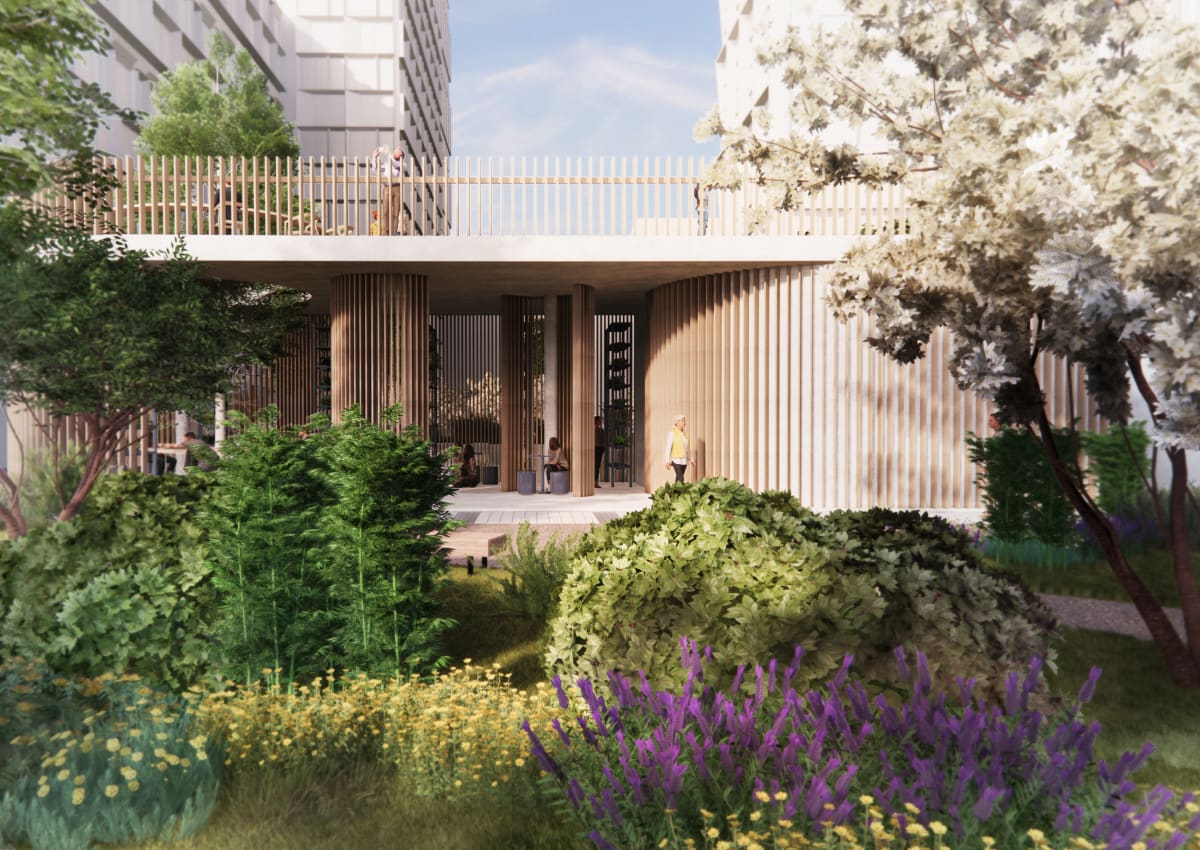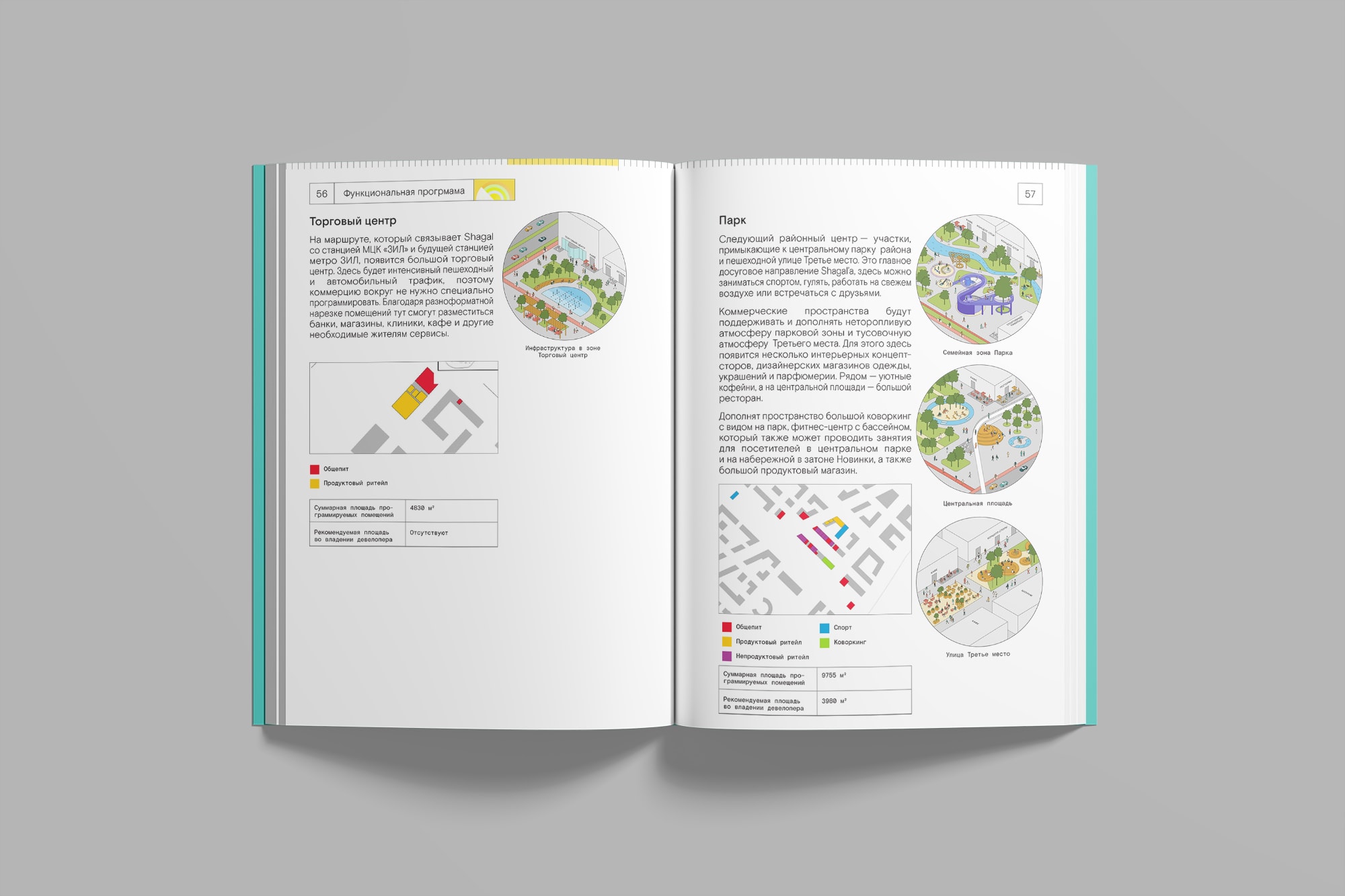shagal: functional program
model of public and commercial spaces of a 15-minute city

how can we make the area self-sufficient and make life in it comfortable at all stages of construction?
Shagal is the largest residential redevelopment project not only in Moscow, but also in Europe: it is 109 hectares and 9 construction phases on the territory of the former ZIL-Yug industrial zone, designed to be commissioned within 15 years. At the request of the Etalon company, CM International became the authors of a large-scale development strategy for the territory of the Shagal quarter. One of the main points of the strategy is a functional program for the district.
The concept of polycentricity, “city within a city” and the principle of 15-minute accessibility suggest that residents of the Shagal quarter do not need to go to the center all the time for a full and interesting life. To make this work, we thought through the phased filling of its key commercial premises and public spaces. The solutions are based on big data about the requests of Moscow residents for commercial services, the volume of consumption of services and favorite types of leisure.
We have identified 6 zones - key areas in which the functions and placement of the main commercial premises are determined in advance. They are located in places where most of the flows of residents and visitors of the quarter intersect. Each of them will have its own atmosphere and require its own content: the first quarter and sales office, school, park, embankment, downtown, shopping center.
Based on the capabilities and limitations of the quarter, along with the commercial frame, we also programmed the filling of public spaces in which residents of the area can spend time with friends or family, play sports or walk the dog. They exist independently, not always directly intersecting with commercial zones, but logically complement their functions.
Based on the capabilities and limitations of the quarter, along with the commercial frame, we also programmed the filling of public spaces in which residents of the area can spend time with friends or family, play sports or walk the dog. They exist independently, not always directly intersecting with commercial zones, but logically complement their functions.
When programming the filling of commercial premises and public spaces, we thought about the needs of people with different needs for the urban environment: for example, families with children, freelancers who want to work close to home, or people for whom it is important to spend more time in nature. As a result, each of them can find their own route, choose suitable locations and spaces to actively use them.


